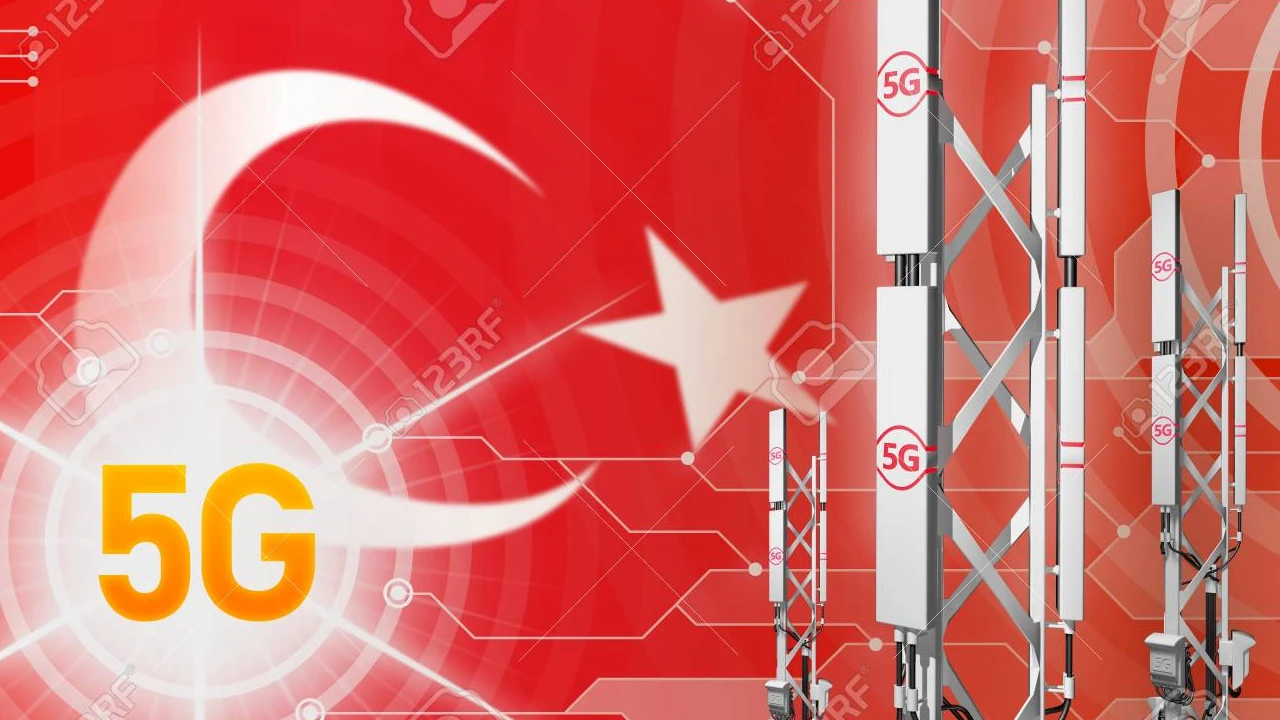The countdown for 5G has begun in Turkey, and it will be available in 2026. The 5G tender is bidding on 700 MHz FDD and 3.5 GHz TDD frequencies. One of the most anticipated topics is how fast we will actually see these frequencies.
What will 5G speeds be in Turkey?
While 5G can theoretically reach speeds of 10 Gbps, these speeds are significantly lower in real-world use. Since 2019, 5G service has been available in many countries around the world, and we have sufficient data available. The frequencies, bandwidths, and speeds to be used in Turkey are determined based on this data.

Of the frequencies up for bid, 700 MHz offers broad coverage but lower speeds. 3.5 GHz offers high speeds but less coverage. This also determines operators’ network strategies. Companies will use 700 MHz in rural and mountainous areas and 3.5 GHz in urban areas. This makes 3.5 GHz the frequency where 5G’s high speeds and low latency will be most noticeable.
The 5G tender provides a minimum of 80 MHz of channel width on the 3.5 GHz frequency. The remaining 20 MHz will be used by operators for 5G’s NR-CA feature. This feature will allow the 80 MHz and 20 MHz bandwidths to be combined, reaching a 100 MHz bandwidth and achieving gigabit speeds.
As a result of the tender, all operators are expected to provide an average speed of 700 Mbps on the 3.5 GHz frequency using at least 80 MHz of bandwidth. Operators that secure a larger share will be able to offer average speeds of 1000 Mbps on a 100 MHz channel width, and in the best case scenario, up to 1200 Mbps.
All operators will be allocated 2×10 bandwidth on the 700 MHz frequency, which will be used in rural areas. This means there will be no significant speed difference between operators in rural areas. Rural users will receive speeds of 40-80 Mbps. In urban areas, speed differences could reach up to 500 Mbps.
In cities, the main 5G frequency will be 3.5 GHz. While theoretical speeds can be achieved with this frequency, in practice, speeds range from 300-1000 Mbps. Under optimal conditions, such as close to a base station and with a small number of users, speeds of 1200 Mbps will be achieved. Upload speeds will range from 40-150 Mbps. The 700 MHz frequency, which will be used in rural areas, will offer download speeds of 40-100 Mbps and upload speeds of 10-25 Mbps.
In Turkey, the 5G tender does not include mmWave (26 GHz and above), the fastest frequency. This is because mmWave has very limited coverage. It can only transmit signals over a few hundred meters and is negatively affected by conditions like thick walls, rain, and fog.
Using this frequency in homes requires installing a base station every 100 meters, which results in significant costs and visual clutter. Currently, mmWave is only used in crowded and narrow spaces such as stadiums, concert venues, and airports. Furthermore, the majority of 5G-enabled phones sold in Turkey lack mmWave support.
In the early years of 5G, operators will use “dual-link” (5G EN-DC) technology. This technology uses 4.5G and 5G simultaneously. The phone’s primary connection is established over 4.5G, while 5G acts as an additional data carrier, boosting internet speeds.
This will allow users to experience gigabit speeds. However, this technology has some drawbacks. Latency is around 20-30 ms with dual-link connectivity, while this decreases to as little as 10 ms with pure 5G. Additionally, because 4G and 5G modems operate simultaneously, the battery drains more quickly.
Scenarios requiring ultra-low latency, such as autonomous vehicles and remote surgery, require a pure 5G infrastructure. True ultra-low-latency 5G in Turkey will likely require several more years.













